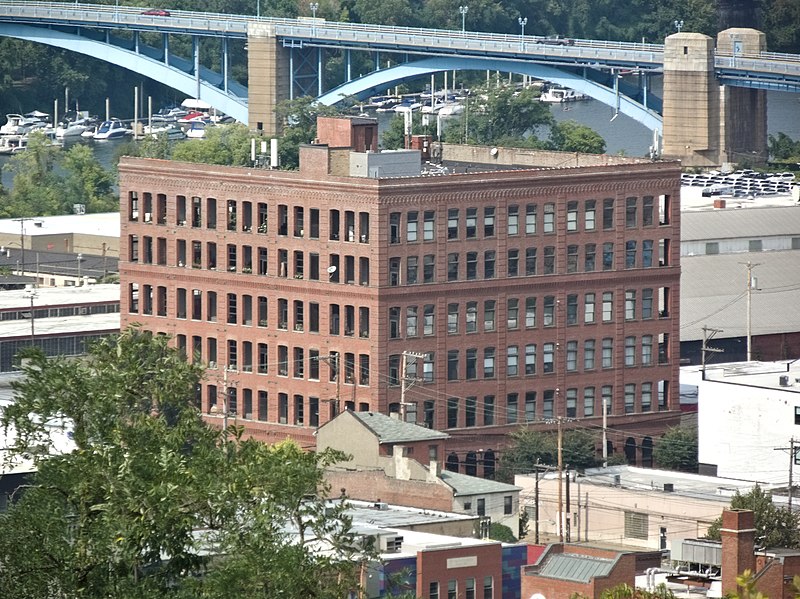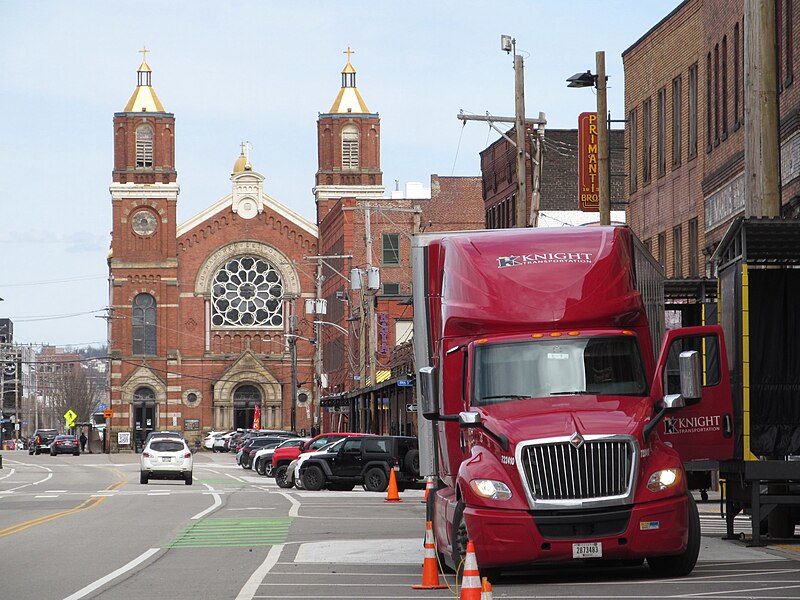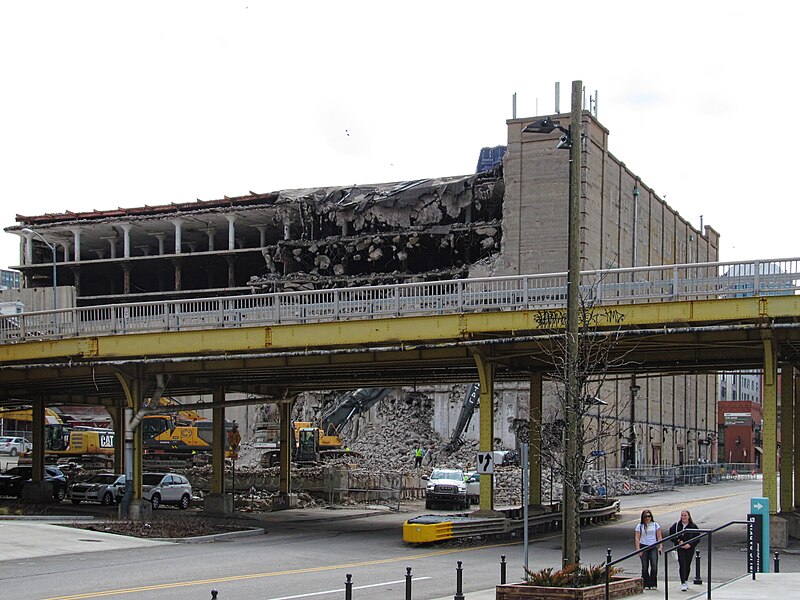
A dignified industrial building now converted to loft apartments. It was built in the 1890s as a machine shop for the Bair & Gazzam Manufacturing Company, and by 1910 it belonged to the Ruud Manufacturing Company, makers of those marvelous automatic water heaters. The style is very much in line with the industrial Romanesque that was popular in the late 1800s; but if we look carefully at the arches on the ground floor, we notice that they are very subtly pointed.
Father Pitt does not know the whole history of this building, but it looks as though the top two floors were a later addition.





















